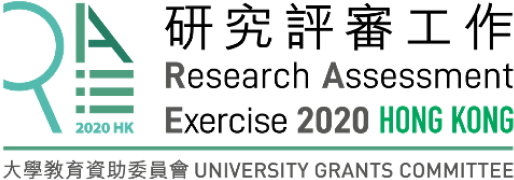Unit of Assessment:
Research categories:
?Clinical Medicine
Pediatrics (1)
Neuroscience & Behavior
Clinical Neurology (1)
Psychiatry/Psychology
Psychiatry (5)
Psychology, Developmental (3)
Psychology, Clinical (1)
Psychology (1)
Case Study
Child and Adolescent Mental Health
1. Summary of the impact
LEUNG’s research has significantly improved the quality and efficiency of mental health services for children and adolescents in Hong Kong, by validating and re-norming clinical assessment tools, and developing treatment protocols, benefitting tens of thousands of clients. Quality mental health service for children and adolescents requires accurate and reliable information on the prevalence of different mental disorders, so that adequate health resources can be allocated optimally to help the clients. Having reliable and valid assessment tools for clinical diagnosis is indispensable for this purpose and for prescription of proper treatments. In addition to constructing valid clinical tests, LEUNG developed evidence-based behavioural protocols for treating attention-deficit/hyperactivity disorder (ADHD). The popularity and demonstrated effectiveness of LEUNG’s clinical tests and treatment protocols in clinical, educational and social services settings attest to the reach and significance of his research, respectively. Through exploitation of practical use of LEUNG’s rigorous psychological research, mental health and educational professionals, such as psychiatrists, clinical psychologists, educational psychologists, social workers, and nurses, can now offer significantly enhanced services.
2. Underpinning research
Despite the importance of having accurate, reliable and culturally responsive assessment tools, in the 2000s, there was a dearth of validated and locally normed assessment tools for child/adolescent psychopathology in Hong Kong (Leung, P.W.L., & Wong, M.M.T., 2003, Psychological Assessment, 15, 268-279). LEUNG observed that although there are nuanced cultural variations in symptom expressions, the core symptoms of major child/adolescent psychological disorders are universal and they are identifiable in all cultures. Thus, instead of constructing indigenous measures for clinical use in Hong Kong contexts, which could be expensive and time-consuming to develop, LEUNG decided to select well-developed, carefully chosen measures created in the Western world, made appropriate cultural adaptations to these tests, and revalidated and re-normed them for local use in Hong Kong.
LEUNG’s team performed this ambitious re-validation and re-norming project in collaboration with major local psychiatric and educational service providers, including the HKSAR Government’s Hospital Authority (HA) and Education Bureau (EDB). Given that the same symptoms of a disorder are often expressed differently across cultures in terms of phenomenology and/or degrees of intensity, LEUNG had made tremendous effort to establish the cross-cultural validity of the assessment tools.
The first deliverable was the successful adaptation and norming of the world-renowned Achenbach’s System of Empirically-based Assessment (ASEBA), which identifies and classifies psychopathology via objective population norms, rather than subjective clinical judgement. The school level ASEBA comprises three parallel measures: Child Behavior Checklist (CBCL) to be completed by parents, Teacher Report Form (TRF) to be completed by teachers, and Youth Self-Report (YSR) to be completed by the youths themselves. LEUNG successfully adapted these three measures for the local assessment of child/adolescent psychopathology in 2006 [R1].
Using the same approach, between 2010 and 2014, LEUNG successfully re-validated and re-normed other measures, including the parent and teacher versions of the Strengths and Difficulties Questionnaire (SDQ) and Strengths and Weaknesses of ADHD-symptoms and Normal Behaviors Questionnaire (SWAN) [R2, R3, R4, R5]. SDQ is a briefer alternative to CBCL/TRF/YSR. SWAN is dedicated to assessing ADHD.
Aside from measure revalidation and re-norming, LEUNG also designed behavioural protocols for treating ADHD. The famous MTA study conducted in the USA in the late 1990s suggested that coupling behavioural treatments with medication brought no added benefits to people with ADHD. LEUNG disagreed with this finding and developed locally validated behavioural treatment protocols (including separate protocols for parents and children) for ADHD and its comorbid oppositional defiant disorder (ODD). A randomized controlled trial (RCT), conducted in collaboration with HA, demonstrated significant added benefits for both disorders (with moderate to large effect sizes) on top of medication. A follow-up [R6] showed that the treatment benefits were maintained after a year. These results changed the then-prevailing view in clinical psychology and psychiatry, affirming the efficacy of combining medication and behavioural treatment. These results also establish LEUNG’s behavioural treatment as a viable alternative to medication when the latter fails.
3. References to the research
[R1] Leung, P.W.L., Kwong, S.L., Tang, C.P., Ho, T.P., Hung, S.F., Lee, C.C., Hong, S.L., Chiu, C.M., & Liu, W.S. (2006). Test-retest reliability and criterion validity of the Chinese version of CBCL, TRF, and YSR. Journal of Child Psychology and Psychiatry, 47(9), 970-973.
[R2] Lai, K.Y.C., Luk, E.S.L., Leung, P.W.L., Wong, A.S.Y, Law, L., Ho, K. (2010). Validation of the Chinese version of the Strengths and Difficulties Questionnaire in Hong Kong. Social Psychiatry and Psychiatric Epidemiology, 45, 1179-1186.
[R3] Lai, K.Y.C., Leung, P.W.L., Luk, E.S.L., & Wong, A.S.L. (2014). Use of the extended Strengths and Difficulties Questionnaire (SDQ) to predict psychiatric caseness in Hong Kong. Child Psychiatry and Human Development, 45, 703-711.
[R4] Lai, K.Y.C., Leung, P.W.L., Luk, S.L., Wong, A.S.Y., Law, L., & Ho. K. (2013). Validation of the Chinese Strengths and Weaknesses of ADHD-Symptoms and Normal-Behaviors Questionnaire in Hong Kong. Journal of Attention Disorders, 17(3), 194-202.
[R5] Chan, G.F.C., Lai, K.Y.C., Luk, E.S.L., Hung, S.F., & Leung, P.W.L. (2014). Clinical utility of the Chinese Strengths and Weaknesses of ADHD-Symptoms and (SWAN) when compared with DISC-IV. Normal-Behaviors questionnaire Neuropsychiatric Disease and Treatment, 10, 1533-1542.
[R6] So, C.Y.C., Leung, P.W.L., & Hung, S.F. (2008). Treatment effectiveness of combined medication/behavioural treatment with Chinese ADHD children in routine practice. Behaviour Research and Therapy, 46, 983-992.
4. Details of the impact
The locally re-validated and re-normed CBCL/TRF/YSR had been widely used in Hong Kong since it was available in the mid-2000s. Between October 2013 and March 2019, 360,026 copies of the tests were sold to 76 major local clinical/educational/social service settings, including government departments, HA and NGOs [S1]. It was accordingly estimated that 65,459 assessments were conducted using CBCL/TRF/YSR every year.
With a population of 700,000 children/adolescents aged 6–17 in Hong Kong, the yearly use of 65,459 copies of CBCL/TRF/YSR (nearly 10%) suggests heavy reliance on their use for assessment/re-assessments on child/adolescent psychopathology.
Local and international epidemiological surveys revealed that about 13-26% of children/adolescents in Hong Kong are at risk of having certain mental disorders at any given time, but only about 30% of these children/adolescents would seek help. Therefore, having effective screening tests that are easy to use is of great value to clinicians, social workers and educators. A satisfaction survey was conducted in 2018/19. In this survey, 32 buyers/users of CBCL/TRF/YSR for 2018/19 were invited to indicate the extent to which they agreed or disagreed (i) that the localized CBCL/TRF/YSR were effective in assessing child/adolescent pathology, and (ii) that the tests were user-friendly and easy to administer [S2]. Twenty-three of the users/buyers (72%) completed the survey. Among them, 12 (52%) strongly agreed and 11 (48%) agreed that the tests were effective assessment tools. Moreover, 7 (30%) strongly agreed, 15 (65%) agreed, and only 1 (5%) disagreed that the tests were easy to use.
Two regular/extensive users of CBCL/TRF/YSR are the Child Assessment Service (CAS) of the Department of Health of the HKSAR Government [S3] and Child/Adolescent Psychiatric Service, Kwai Chung Hospital (KCH), HA. The former provides assessment and referral services to local children under 12 years old, while the latter serves about 2 million people in Kowloon. Both organizations have reviewed the benefits and usefulness of CBCL/TRF/YSR. According to Dr. Florence Lee of CAS, “The comprehensive information provided by CBCL and TRF definitely enriches our understanding of the child and facilitates our assessment… The availability of local norms is deemed important as there is always concern with cultural validity and adaptation issues during the use of foreign tests or rating scales in the local population …The use of locally normed and validated assessment tool enhances the overall quality and effectiveness of our Service…” [S3]. Dr. Tang Chun-pan of KCH has commented on both the use of SWAN and CBCL/TRF/YSR: “Prof. LEUNG…brought about constructive and positive changes in the clinical service model and implementation of service in the child and adolescent psychiatric team in Kwai Chung Hospital… Reliable and locally-normed screening and assessment tools are important to child and adolescent mental health service delivery… Scales with local norms are invaluable in facilitating our diagnostic work and in monitoring of treatment progress…” [S4].
As mentioned above, SDQ is a briefer alternative screening test that affords efficient and cost-effective screening of general psychopathology. Not surprisingly, the Coordinating Committee on Child/Adolescent Psychiatric Services, HA had enthusiastically recommended the use of SDQ in its triage system to screen psychiatric referrals. Dr. Flora Mo of Alice Ho Miu Ling Nethersole Hospital (AHNH) has aptly summarized the positive experience of using SDQ in her Child/Adolescent Psychiatric Service: “previously, this screening process (triage system) will depend wholly on the clinical acumen of the frontline staff. However, with the availability of the SDQ…a locally revalidated and re-normed instrument…the confidence of the frontline staff in performing the triage function is considerably enhanced so much so that the SDQ…is currently the standard measure administered to ALL incoming new referrals… The arrival of the revalidated and re-normed SDQ and SWAN…has filled a major service gap for evidence- and norm-based objective measures for child psychiatric disorders…”. Dr. Mo further mentioned that with respect to ADHD, the availability of SWAN “is assisting tremendously the clinicians to have an evidence- and norm-based objective measure to not only aid diagnosis but also monitor treatment progress…” [S5]. It should be noted that ADHD is a highly prevalent disorder of 5-8%, constituting 30-50% of referrals to child psychiatric services.
EDB has administered SDQ and SWAN among 350,000 primary school children to obtain initial assessments to plan subsequent mental health intervention in primary schools. Reflecting on this experience, Dr. Verena Lau of EDB has summarized the usefulness of SDQ/SWAN as screening tests in this way: “the local norms provide useful reference for interpreting students’ behaviours… The two screening tools (SDQ & SWAN) have been widely used by educational psychologists employed by both EDB and school sponsoring bodies… regarded as a key component in the evaluating process in view of their validity and reliability… play a significant role in effective screening and thus make possible early intervention targeting at students’ difficulties” [S6].
Aside from advancing clinical diagnosis and screening of child and adolescent psychopathology, the behavioural treatment protocols for ADHD have also made significant impact. The recommended first line of treatment for ADHD is medication. Unfortunately, about 25–30% of children with ADHD do not respond to medication. Moreover, a large number of parents refuse medication because of the potential side-effects. The behavioural treatment developed by LEUNG can be a viable alternative. Since its release, the treatment protocols have become a widely practiced treatment modality for ADHD in many child/adolescent psychiatric units of HA. It has benefitted about 200 children annually. Dr. Tang of KCH has made the following comments on the benefits of the treatment protocols: “this training program… is protocol-driven and evidence-based. The added benefits of this behaviour training program on top of medication for Chinese ADHD children in routine practice were elaborated and discussed in the paper published in Behaviour Research and Therapy… behavioural treatment training for ADHD has benefitted our patients and their families both in reduction of symptoms, enhancement of functioning and improvement in the parent-youth relationship…” [S4].
5. Sources to corroborate the impact
[S1] Internal sales records of CBCL/TRF/YSR, Department of Psychology, The Chinese University of Hong Kong, between October 2013 and March 2019. [Appended]
[S2] Survey request/form for users/buyers of CBCL/TRF/YSR. [Appended]
[S3] Reference letter from Dr. LEE Mun-yau Florence, Consultant Pediatrician, Child Assessment Service, Department of Health, Government of the Hong Kong Special Administrative Region. [Appended]
[S4] Reference letter from Dr. TANG Chun-pan, Consultant Psychiatrist, Kwai Chung Hospital, Hospital Authority. [Appended]
[S5] Reference letter from Dr. Flora MO, Consultant, Child and Adolescent Psychiatry Unit, NTEC and COS, Department of Psychiatry, Alice Ho Miu Ling Nethersole Hospital, Hospital Authority. [Appended]
[S6] Reference letter from Dr. Verena LAU, Principal Education Officer (Special Education), Education Bureau, Government of the Hong Kong Special Administrative Region. [Appended]

